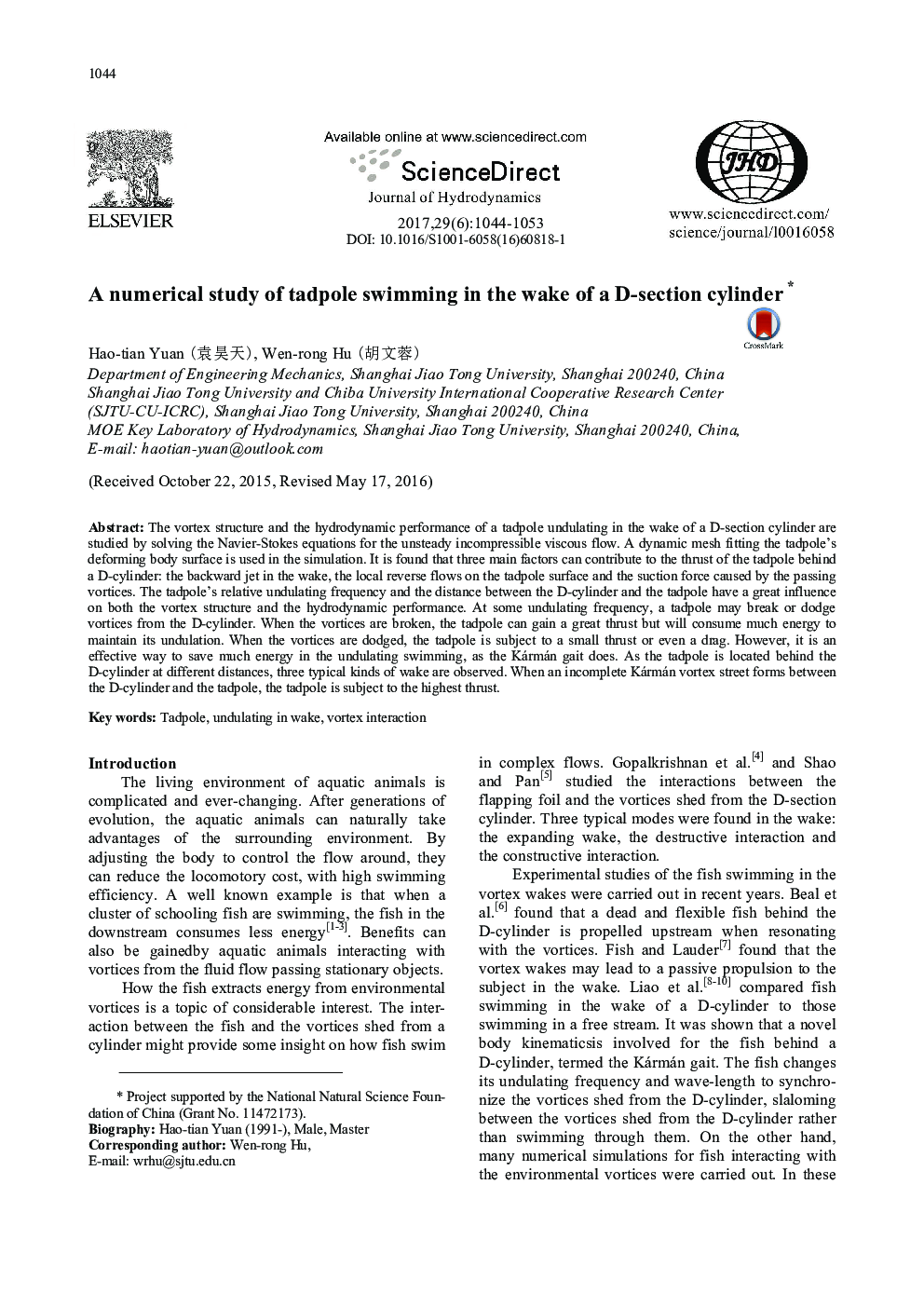| Article ID | Journal | Published Year | Pages | File Type |
|---|---|---|---|---|
| 8060331 | Journal of Hydrodynamics, Ser. B | 2017 | 10 Pages |
Abstract
The vortex structure and the hydrodynamic performance of a tadpole undulating in the wake of a D-section cylinder are studied by solving the Navier-Stokes equations for the unsteady incompressible viscous flow. A dynamic mesh fitting the tadpole's deforming body surface is used in the simulation. It is found that three main factors can contribute to the thrust of the tadpole behind a D-cylinder: the backward jet in the wake, the local reverse flows on the tadpole surface and the suction force caused by the passing vortices. The tadpole's relative undulating frequency and the distance between the D-cylinder and the tadpole have a great influence on both the vortex structure and the hydrodynamic performance. At some undulating frequency, a tadpole may break or dodge vortices from the D-cylinder. When the vortices are broken, the tadpole can gain a great thrust but will consume much energy to maintain its undulation. When the vortices are dodged, the tadpole is subject to a small thrust or even a drag. However, it is an effective way to save much energy in the undulating swimming, as the Kármán gait does. As the tadpole is located behind the D-cylinder at different distances, three typical kinds of wake are observed. When an incomplete Kármán vortex street forms between the D-cylinder and the tadpole, the tadpole is subject to the highest thrust.
Keywords
Related Topics
Physical Sciences and Engineering
Engineering
Ocean Engineering
Authors
Hao-tian (è¢æ天), Wen-rong (è¡æè),
